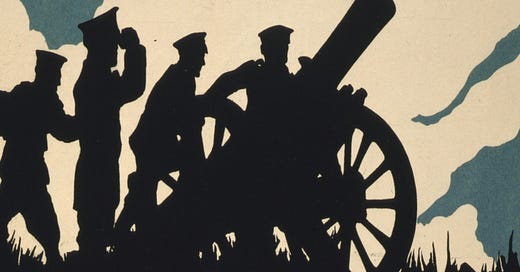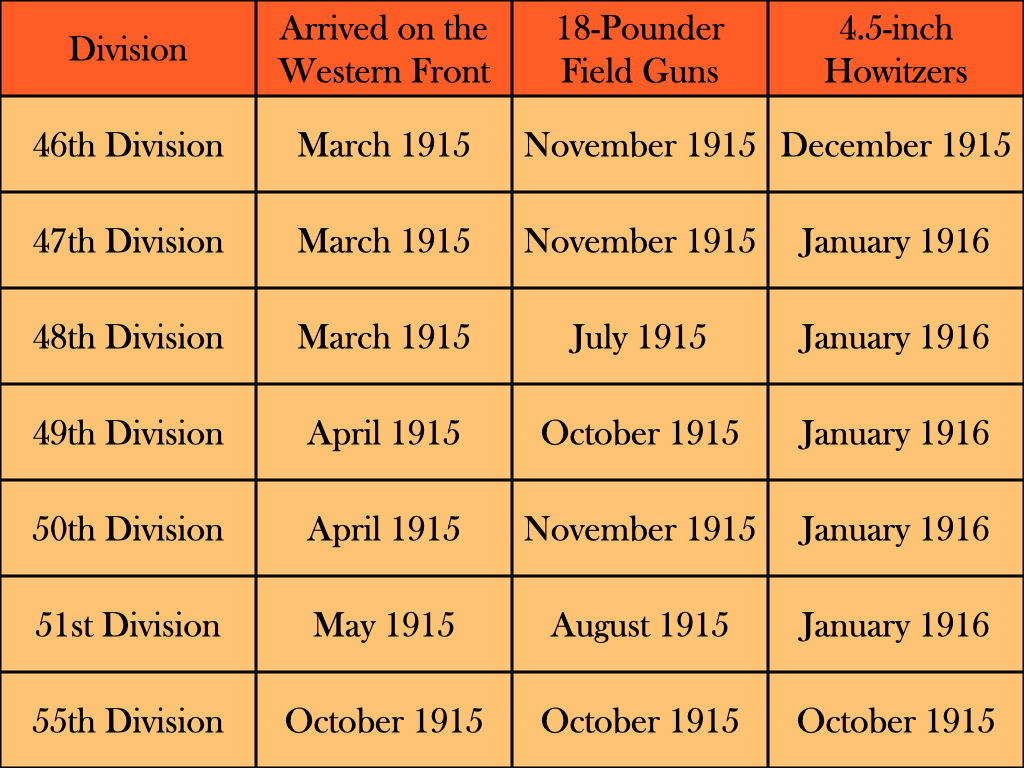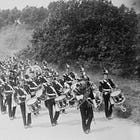From time to time, The Tactical Notebook will revisit, refresh, reformat, revise, and reissue a previously published piece. This article belongs to that category.
The form taken by the artillery establishments of infantry divisions formed in haste during the early months of the First World War, whether the improvised divisions of the Regular Army, the divisions of the New Armies, the Canadian Division, or the two infantry divisions of the Indian Corps, owed much to shortages of formed units, artillery pieces, and experienced officers. The divisional artilleries of the divisions of the Territorial Force, however, had been designed, at leisure, well before the start of the war. Because of this, they provide useful means of separating organizational features that resulted from wartime pressures from those that reflect the considered opinions of senior soldiers.1
When, in 1907, the Territorial Force took its first breath, the Regular Army had started to take delivery of the first 18-pounders and, at the same time, begun to test competing prototypes for a new light field howitzer. It is thus not surprising that the officials charged with reforming both forces should arrange for the ‘Saturday evening soldiers’ to inherit field pieces of types made redundant by the re-armament of their full-time counterparts: the 5-inch howitzer and the 15-pounder field gun.2
Adopted in 1896, the 5-inch howitzer made the transition in its original state. The 15-pounder field gun, however, had made its debut in 1883, well before the dawn of the ‘quick-firing revolution’. Thus, to mitigate the obsolescence of the piece, the Master General of the Ordnance arranged for the fitting of an on-carriage recoil absorbing mechanism onto each 15-pounder field gun transferred to the Territorial Force, thereby transforming it into a ‘15-pounder Breech-Loading Converted’.3
Alas, the plan to provide hand-me-down ordnance to the field batteries of the Territorial Force soon fell afoul of arithmetic. That is, while the provision of seventy-two field pieces to each of the new Territorial divisions would have required the issue of a little more than a thousand field pieces, the number of such weapons on hand hovered in the vicinity of eight hundred.4
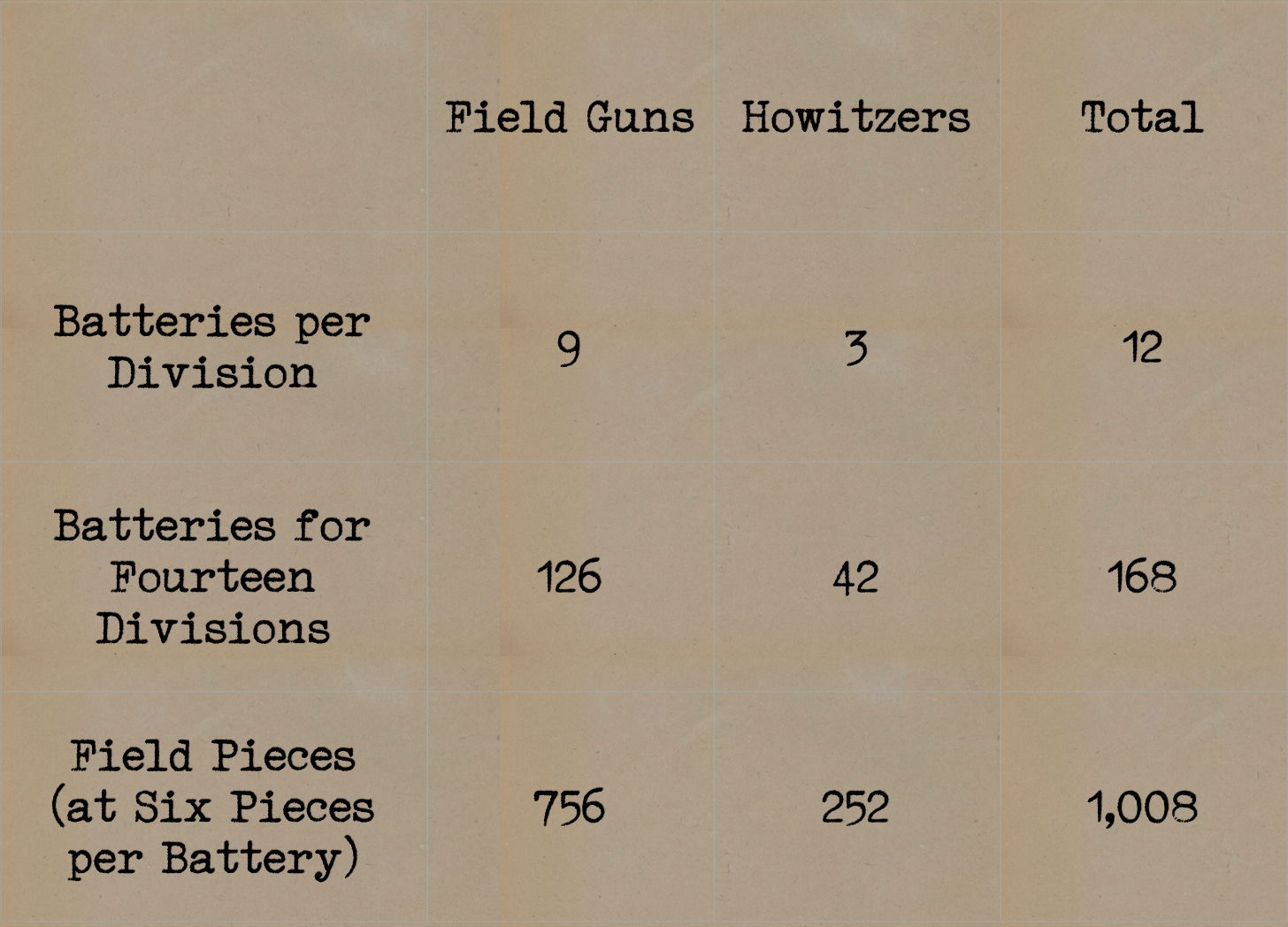
The designers of the Territorial Force solved the shortage of 15-pounder field guns by forming the field gun batteries of the new divisions as four-gun units. Doing the same for Territorial batteries armed with 5-inch howitzers, however, only provided a partial solution. Thus, the authors of establishments ended up reducing, from three to two, the number of howitzer batteries allowed to each division.
In addition to addressing the shortage of suitable weapons, the reduction in the number field pieces issued to each Territorial division simplified the work of battery commanders. It also reduced the need for soldiers skilled in the handling of horses and horse-drawn vehicles, men who, thanks to the displacement of muscle-powered conveyances by mechanical means of transport, proved harder to find with every passing year.
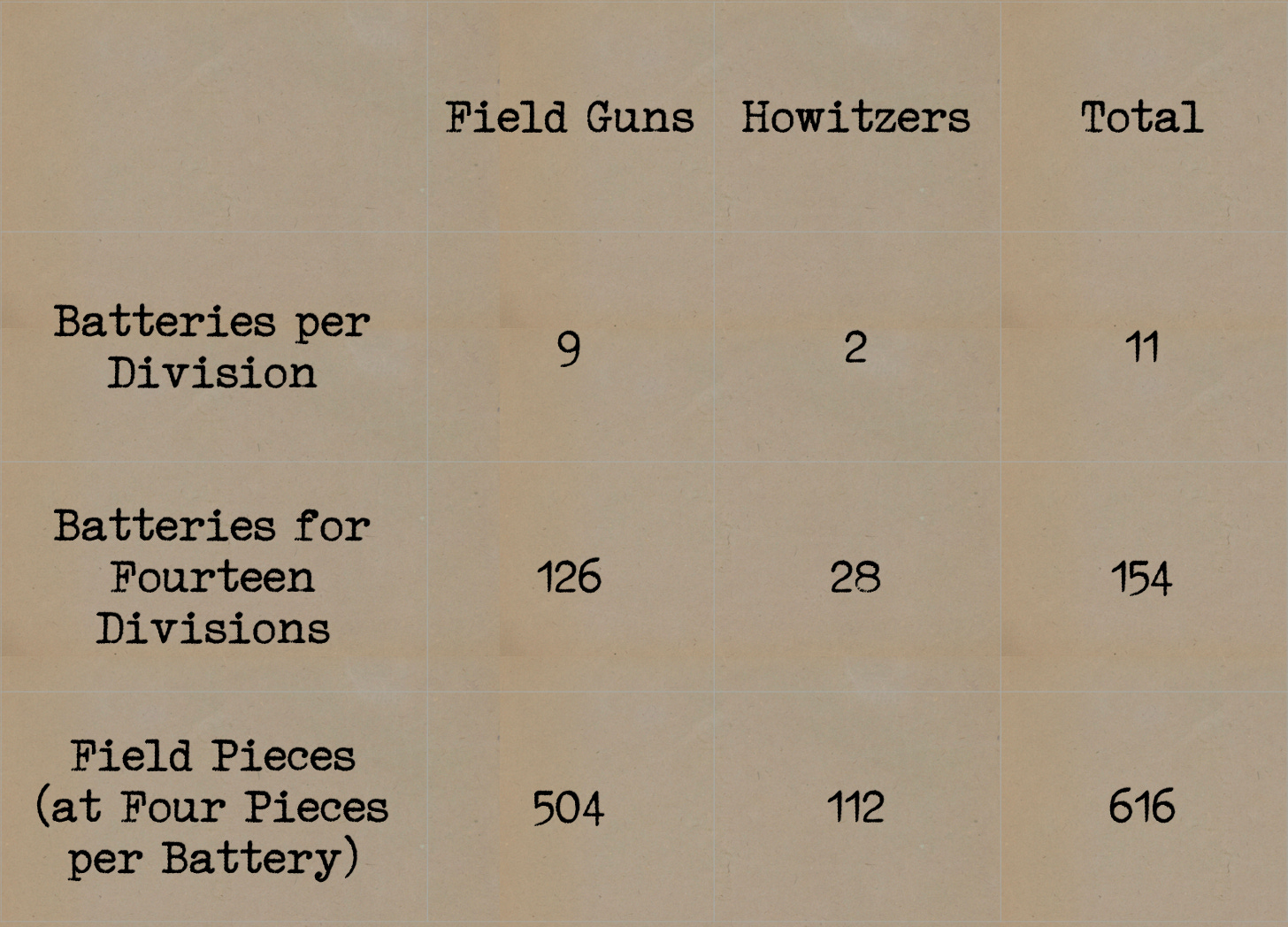
Territorial Force divisions did not begin to arrive on the Western Front until the spring of 1915. Thus, neither the 15-pounder field gun nor the 5-inch howitzer played any appreciable role in the first winter of position warfare. By the late summer of 1915, moreover, Territorial Force divisions in France and Flanders had begun to exchange their obsolescent weapons for 18-pounder field guns and 4.5-inch howitzers. As the new weapons replaced their predecessors on a one-for-one basis, the rearming of the Territorial Force divisions reduced the diversity of armament within the Expeditionary Force without reducing the diversity of organizational schemes. 5
This article belongs to a series, the other installments of which can be found on the following guide.
To share, support, or subscribe to this newsletter:
For an outsider’s view of the peacetime Territorial Force see Hippolyte Langlois L’Armée Anglaise dans un Conflit Européen [The British Army in a European Conflict] (Paris: Berger-Levrault, 1910). (Portions of this book appeared in Volume 55 the Revue des Deux Mondes.)
Handbook for the 15-Pounder BL Field Gun (Mark I) (Field Batteries) (London: HMSO, 1900) and Handbook for the 5-inch BL Howitzer (London: HMSO, 1909)
Len Trawin, Early British Quickfiring Artillery, (Hemel Hempstead: Nexus Special Interests, 1997) and Headlam, The History of the Royal Artillery Volume II (1899-1914), pages 93-94
Number of Guns in Possession at Outbreak of War, TNA, WO 79/84.
Becke, Order of Battle of Divisions, Part 2A, pages 65, 73, 81, 89, 97, and 105.


